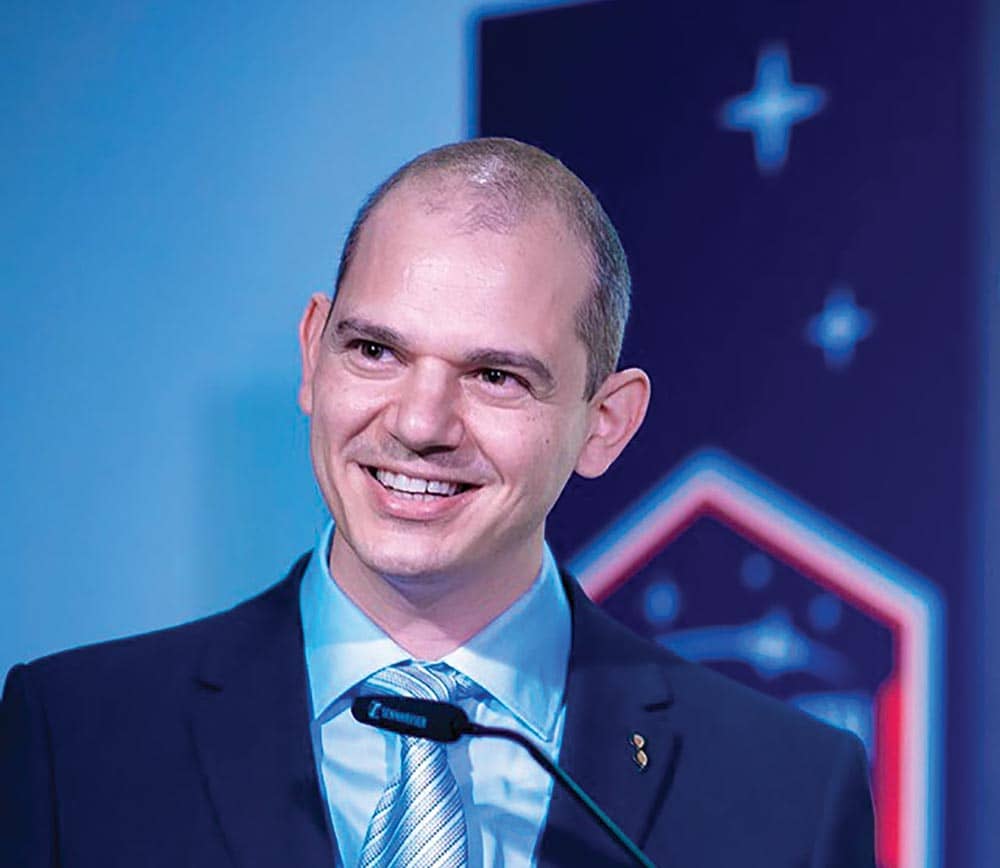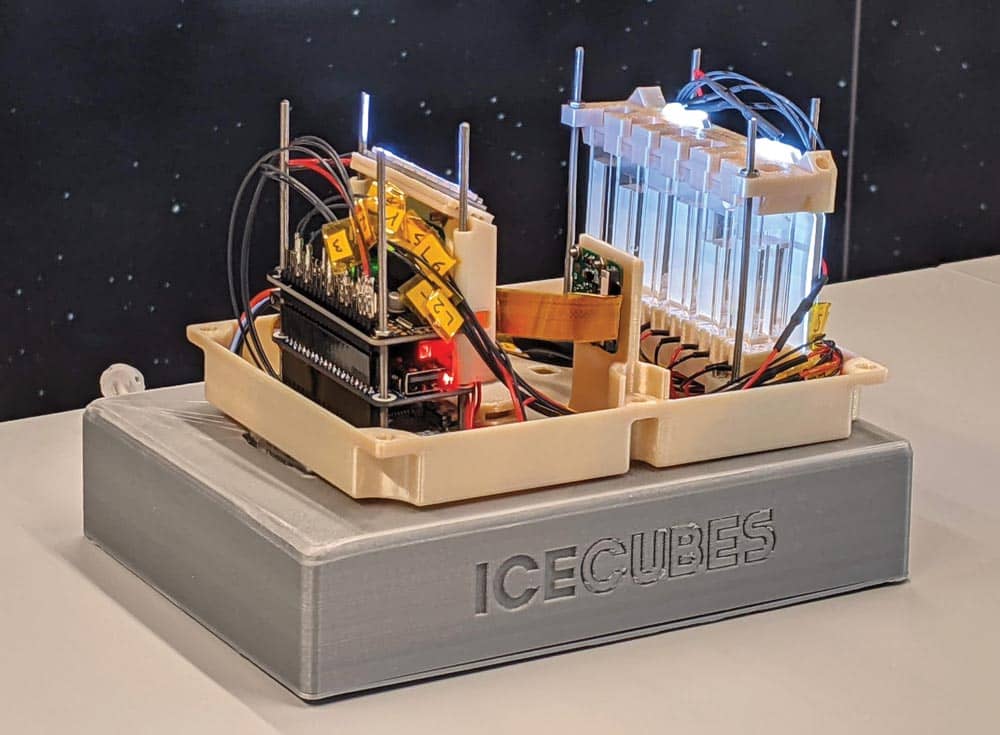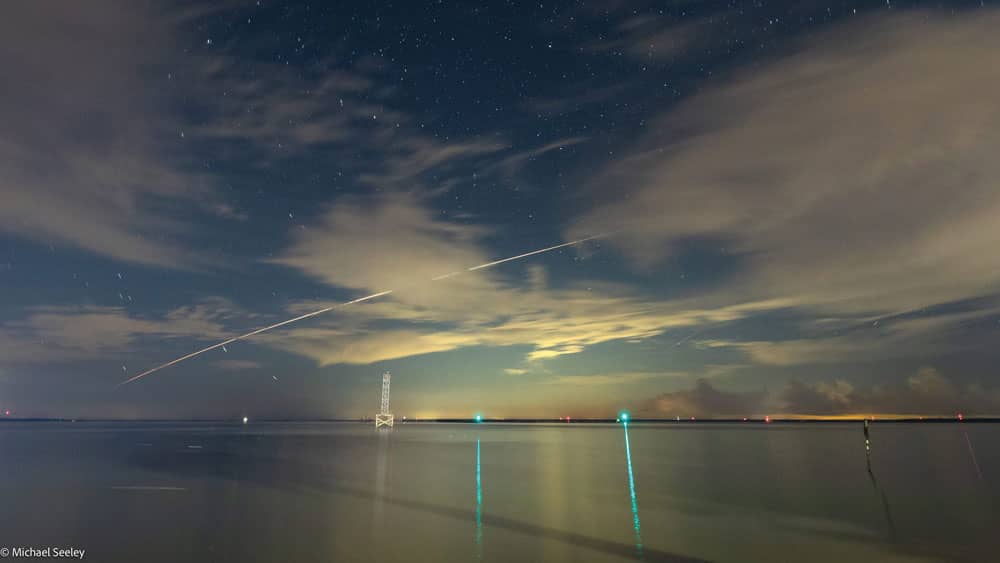We’ve all gazed into the inky night sky and wondered, but for Prof. Joseph Borg, wondering wasn’t enough — he wanted to launch Maltese science into space. THINK’s Ahmed Taha gets in touch to find out more about the brave project!
Darkness covered the scene, and silence was the only dominant voice at Launch Pad-39A at Florida’s Kennedy Space Center. Everyone was anticipating the faint voice starting the countdown. A massive combustion broke the silence as SpaceX’s Falcon 9 rocket launched in the background, delivering over 2,000 kilos of cargo to the International Space Station (ISS).
This scene might sound like a standard delivery to the ISS, but among this cargo was something special to Malta. Biomedical Laboratory Scientist and Professor Joseph Borg (Faculty of Health Sciences, University of Malta) is the leader of Project Maleth and the SpaceOMIX team, which has ushered in Malta’s first space bioscience experiment. He explains why this moment was exceptional for Malta’s scientific research.

The road to outer space
Project Maleth is Malta’s first scientific program to be sent to the ISS. The project aims to kickstart a new era of space diplomacy for experimental biology, which could have a significant impact on the medical field.
‘I am a member of an analysis working group at NASA’s Gene Lab; they handle data, information from astronauts, and various animal models sent to space and back,’ explains Borg. Borg is also a member of the European Space Agency’s (ESA) space omics team. Omics is a discipline that covers all things related to genetics, genomics, proteomics, metabolomics, and others, as well as experiments carried out under microgravity or in space. Being part of these projects has certainly helped inspire Project Maleth. Borg goes on to say, ‘the fact that I was privy to experiments conducted by these types of people, these types of projects, it was natural to think of something along the same lines. Instead of using someone else’s data to analyse in space, we chose to send a project which is ours.’
The mission that Borg had in mind was a collection of bacteria, called a microbiome. This particular microbiome comes from human skin samples (specifically wound ulcers) from diabetic patients. The bacteria was packed in a biocube and launched into outer space, but not before the biocube underwent gravity, stress, and vibration testing! The cube was then launched, handled, and installed at the Space Station Laboratory by Expedition 65 European Space Agency astronaut Thomas Pesquet. Meanwhile, in Malta, the mission control centre had direct communication with the cube 24/7.
Inside the cube
Sending something into space is always exciting, but why send human bacteria? ‘We usually have a lot of bacteria on our skin, which for the most part, is not a problem. But if the skin breaks, such as through a wound, then that can become infected. Diabetic patients in particular have a huge problem with this,’ Borg explains. ‘Most of these bacteria are very hard to handle or treat. Some are receptive to antibiotics, but others aren’t. This got us thinking about what would happen if we exposed these bacteria to the harsh environment of space, high solar radiation, and microgravity.’


The cube itself has a power socket, two cameras to monitor the samples from Earth, and various LED lights and other sensors. After installing the experiment inside the ICEcubes’ platform in the Columbus Module of the ISS hosted by Space Applications Services, it remained untouched. The cube worked autonomously, controlled remotely from Malta until the astronaut disassembled and packaged the cube to be sent back to Earth.
The biocube is now back on Earth after 50 days at the ISS. The Maltese team is conducting genetic analysis and comparing the space samples to the control samples that remained on Earth. ‘We hope to discover how these bacteria adapt, behave, grow more or grow less, maybe die off. We want to see the genetics behind it, what makes them thrive better, or what kills them faster,’ says Borg. The results could have a huge impact for molecular therapy and precision-based medicine to help treat these kinds of ulcers.
Another part of the cube contained a slot for an SD card. Before the launch, during a ‘Meet the Scientist’ event, a campaign was announced asking children to send their digitised experiments, ideas, wishes, messages, or artwork. These tokens accompanied the experiment to space which, pardon the pun, left the kids starstruck!
Challenges along the way
Borg and his team faced many challenges. They needed to figure out how to access the samples and prepare the cube for space flight. Yet their biggest challenge was balancing design and efficiency.
‘Until we nailed the perfect combination, we had a couple of — not failures — but comments coming back from the NASA toxicology lab,’ says Borg. ‘Questions like, what is the buffer, what are the samples, or what type of organisms are you expecting to see? This was a challenge because it was the first time we had to defend or explain the project in greater detail, but it was fun!’

One heartstopping moment did occur after the cube was launched. At one point, the signal was lost as the ISS was unreachable. ‘We couldn’t connect or access the cube. It was really a moment of anxiety,’ he explains with a giggle.
SpaceOMIX was Malta’s first, bold step towards the final frontier. But where next for the Maleth Program? The Moon or perhaps even Mars? Borg remains hopeful, ‘we are trying to find a way to hitch a ride with lunar rovers. Instead of having a payload onboard the ISS, we plan on having miniaturised scientific payloads onboard the rover that will be roaming the moon. We have one in design at the moment, and this is the next stepping stone, once it works. We have Maleth II coming up in May 2022, taking a follow-up experiment to the ISS, and a few other surprises along the way. This will of course precede any missions that we plan for the Moon and Mars, the latter planet alone needing about six to eight months for delivery on its surface. But we are very hopeful!’ While most of us will never venture into outer space, it is comforting to know that some of the answers to our health problems may be out there, just beyond the stars. It’s up to endeavours like Project Maleth to bring them back for everyone.





Comments are closed for this article!